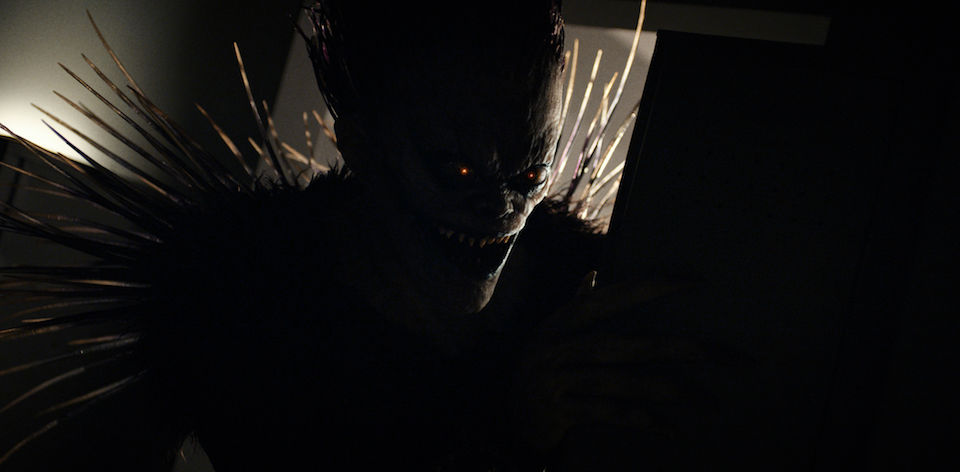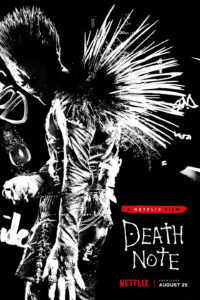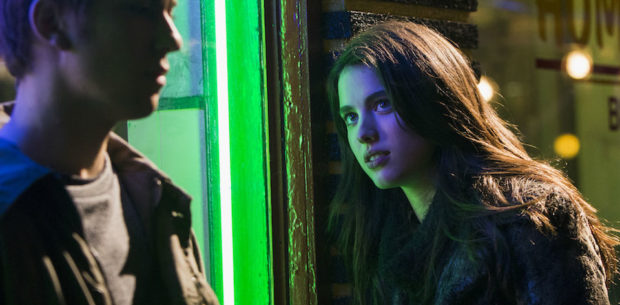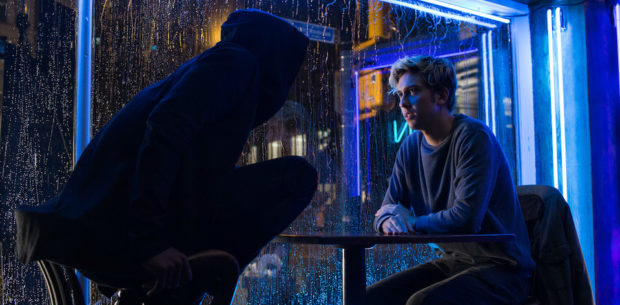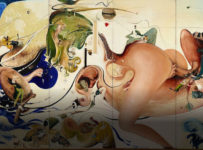What’s immediately striking about the first English language adaptation of DEATH NOTE is that it is both wholly familiar and completely different.
Shifting the action from its native Japan to Seattle, Light (Nat Wolff) finds the titular notebook that gives him the power to kill anybody by writing their name in it. Watched over by Ryuk (Willem Dafoe), a god of death, Light begins a vigilante killing spree under the name Kira. He soon attracts the attention of the brilliant detective L (Keith Stanfield) who is closer to the truth than he realises.
In the 14 years since Tsugumi Ohba and Takeshi Obata’s manga was first published in the pages of Weekly Shōnen Jump, the DEATH NOTE franchise has grown and morphed through anime, light novels, live action films, video games, a TV drama, and even a musical. It’s a contemporary Japanese pop-cultural phenomenon, and from the first glimpse of the falling notebook or a half-eaten apple, the basic iconography is all still there.
Yet this is where the unavoidable conversation about whitewashing comes in. Granted, DEATH NOTE is an adaptation that is set in the US, with Light Yagami becoming Light Turner. However it is still originally a product of Japanese culture, and director Adam Wingard and his writing team have no issue with appropriating Japanese locales and situations where it is deemed aesthetically necessary. Indeed, the Tokyo massacre scene that introduces L looks like it stepped straight out of a neon lit Sion Sono film.
Fuelled by a 1980s soundtrack – peppered with Australian Crawl, Chicago, and Air Supply – Wingard’s DEATH NOTE has a curious mashup aesthetic to it. A retro fluorescent glow blends with the timeless grunge of the Pacific Northwest, punctuated by some of the bloodiest deaths we’ve seen, even by Netflix standards. At least half of the killings involve exploding heads, starting with a decapitation that sets the tone for the film. Even the characters are mashups, with the enabling Mia (Margaret Qualley) a stand-in for the character of Misa Amane.
Taken on its own, this all works surprisingly well. It’s a slender adaptation of the material, albeit one that departs from the source as often as it tips its hat to it. Positioning itself as a focused game of cat and mouse, it builds up to amazing climax that makes use of the Seattle Great Wheel in spectacular blockbuster style.
Ultimately, DEATH NOTE is hamstrung by trying to squeeze too much story in too slender a frame. Subplots investigating L’s identity and much of Light’s relationship with his cop father (Shea Wigham) are sidelined by the bigger story being told. Of course, the door is left wide open for more chapters featuring the characters, so perhaps there will be time to explore these threads later.
[stextbox id=”grey” bgcolor=”F2F2F2″ mleft=”5″ mright=”5″ image=”null”]2017 | US | DIR: Adam Wingard | WRITERS: Charles Parlapanides, Vlas Parlapanides, Jeremy Slater | CAST: Nat Wolff, Margaret Qualley, Keith Stanfield, Paul Nakauchi, Shea Whigham, Willem Dafoe | DISTRIBUTOR: Netflix | RUNNING TIME: 100 minutes | RELEASE DATE: 25 August 2017 [/stextbox]

